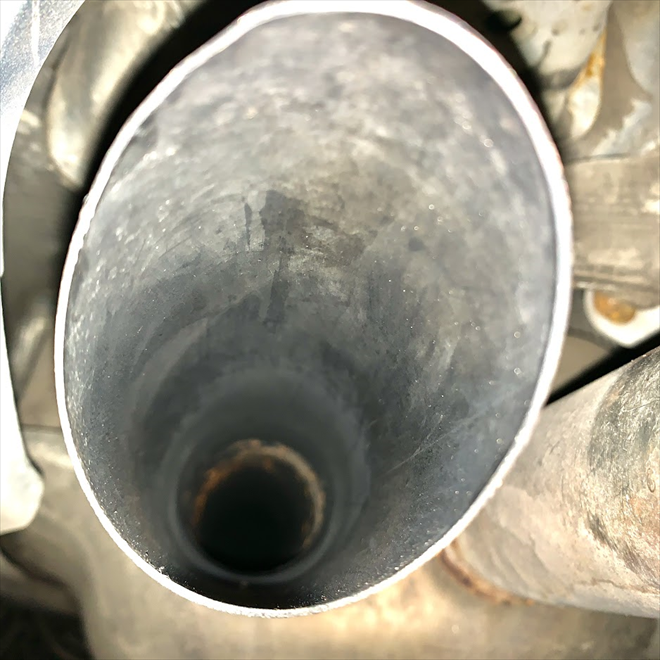
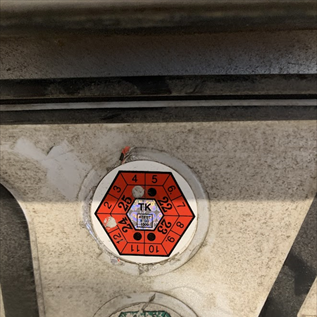
Recently there was a TV documentary showing how we PASSED a roadworthiness test with a vehicle that has a leaking particle filter. The first quick look into the exhaust tailpipe of a 15-year-old Skoda Octavia didn't clearly indicate a problem but it had one.
Modern diesel engines inject fuel into the engine with injectors that have holes with a diameter smaller than human hair and with pressures high as 2000 Bar. This technology doesn't generate any smoke from the engine even when the engine doesn't have a DPF (FAP) filter. The majority of modern engine soot particles are so small that they are invisible. If a vehicle emits visible smoke then it doesn't have a filter and also it has a problem combusting diesel fuel completely.
If you wipe the inside of the exhaust tailpipe with a clean white towel/cloth and any silver-black contamination on the towel is a clear sign that the particle filter has a leak problem.
At an Emission Test, a leaking filter can be revealed when the engine emits during acceleration next to invisible micro-soot particles larger sized particles that flow through the leaking sections bypassing the filtration channels allowing detection by the optical testing equipment.
The tested vehicle's Emission Test Station protocol shows a measured Smoke Density value of 0.06 [1/m]. Half an hour later we are unable to measure this value at all! The maximum limit set down by law is 0.25 [1/m]. All our test results are around this value and we know that this is wrong. Undamaged filters will show a zero.
For measuring emissions on vehicles with DPF filters the classic smoke meter isn't suitable. The correct equipment is a "particle counter". This machine doesn't use optical light absorption measurement. It uses electrostatic charging of particles passing through a sensor that registers even the smallest particles that are invisible to the optical smoke meters. The charging method detects every single microparticle and recalculates its number to a cubic centimetre value. The COUNTER registers even the smallest ultrafine particles in the size of PM 2.5–10 microns.
In the beginning, we have to say that the actual testing of the smoke level with an acceleration method is an unfortunate alternative for measuring the true smoke level. This test activates a very abrupt flow of exhaust gases through the exhaust system. The gases drag with them all the accumulated deposits in the complete exhaust system. The test measurement includes a large error that can't be established. It's impossible to judge how much soot comes from the actual exhaust system a how much is generated by the engine during a single acceleration.
The combination of wiping the inside of the tailpipe with a clean towel and the visual inspection of the tailpipe can safely determine the integrity of the filter. Unfortunately, the automotive spare parts sector very often offers "lower density" particle filters that are used and that contaminate the tailpipe so much that it looks like a vehicle without a particle filter.
The conclusion is that it is possible to find out whether the particle filter is functional or not with or without test equipment. The question is what is the safe level of microparticle penetration through the filter and who is responsible for testing this on the aftermarket filters?

We can see that the inside of the tailpipe is covered only with a light coat of grey-black particles without any large-sized soot.

The vehicle passed the emission test. Our emission test with the same equipment tested 4 times higher values and the vehicle should have failed the emission test. This is despite the fact that none of the Emission Test Stations are equipped with machines capable of measuring the microparticles.

We don't know what went on in the Test Station. We couldn't achieve these values during repeated accelerations and even when accelerating to half the rpm level.
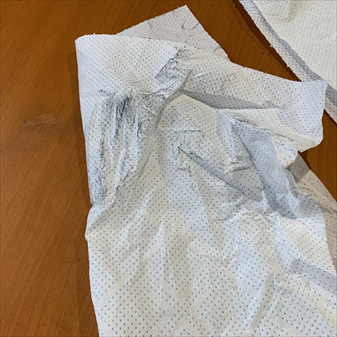
The towel isn't black from large soot particles but just a light grey-black coating. If you use a finger it will be difficult to wash clean. The reason is that the filter allows ultra-fine particles to pass through. The DPF filter has a higher porosity than when it was new.
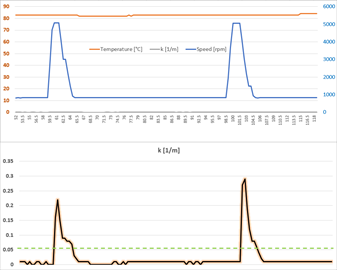
The value measured by the Emission Test Station is represented by the green dotted line.
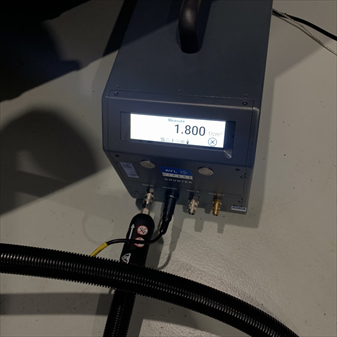
The workshop has clean air. Outside air has the same value. These values are common outside city centres.
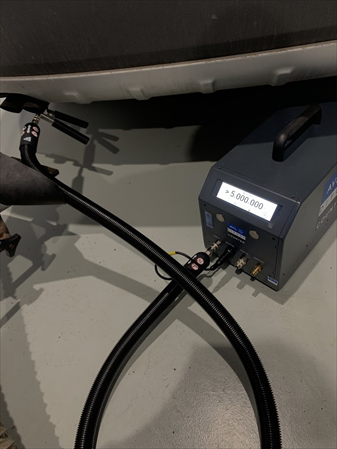
Despite the almost clean tailpipe and slightly contaminated towel, the leaking filter is emitting very high particle levels.
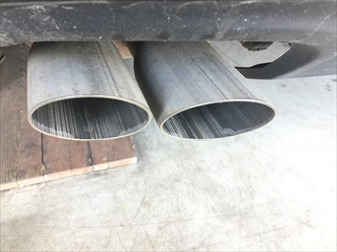
No sign of soot. Not even a minor layer. The towel used to wipe the tailpipe is clean.

These are values from a Citroen C5 2,2 HDi, with a minor problem with cold starts, but the vehicle's DPF (FAP) filter is OK.
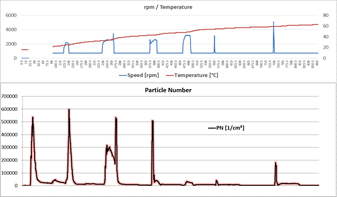
14 minutes of warm-up after a cold start with a good filter. Test showing the dynamic development of the number of emitted particles after a cold start from 10 °C for a period of 14 minutes and including several accelerations. After a cold start, the filter emits about 10 times a higher number of particles (20 000 PN/ccm). After about 14 minutes, it captures almost all the microparticles. Only during acceleration is the number higher. Note: The Škoda Octavia Scout 2,0 TDi that we tested and that PASSED the Emission Test is emitting permanently 5 000 000 particles (max limit of the test machine).
Kompletní informace na toto téma
a mnoho dalších informací najdete pod odkazy níže.
Vyzkoušejte si nás nezávazně na 14 dní zdarma.
Vyzkoušet 14 dní zdarma
Komentáře (0)
Vložit soubor